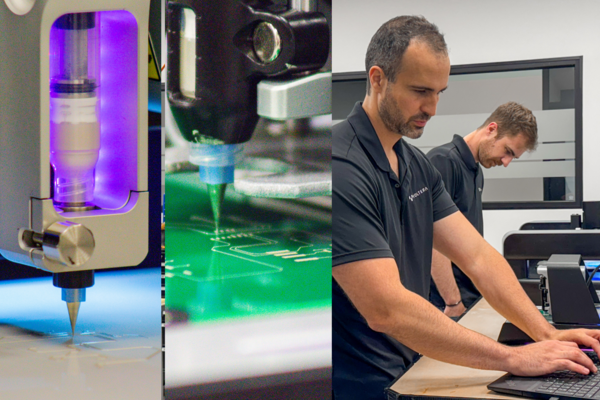
Zebra mussel is inspiration for human body super glue
Waterloo engineering professor is developing a glue that may one day be used to engineer human tissues and organs

Waterloo engineering professor is developing a glue that may one day be used to engineer human tissues and organs
By Kira Vermond Marketing and Strategic CommunicationsThe zebra mussel has a bad reputation as being an invasive species but a Waterloo researcher is using the maligned mussel as inspiration for developing sticky synthetic adhesives that he hopes will be used in the human body some day.
“We do not copy nature. We’re just inspired by it,” says Boxin Zhao, a professor in Waterloo’s Department of Chemical Engineering. “We ask, ‘What’s the chemistry and how do we use it?' ”
 New super glue conducts electricity
New super glue conducts electricityRecently, Zhao’s team published a research paper about a unique way to use the adhesive chemistry of zebra mussels in polymers. The team discovered a way to vastly improve the glue’s electrical conductivity. A conductive glue has medical applications because it could one day be used as a platform for biomedical sensors or for human tissue engineering, says Zhao.
He uses the zebra mussel as inspiration because it produces glue-like fibres that, once they cure and harden, are nearly impossible to remove - even underwater.
Photo credit: Vitalii Hulai/Thinkstock/Getty Images
His team has already developed an innovative super glue that can strongly bond things underwater, which could be useful for surgeons looking to bond tissues inside the wet environment of the human body.
Zhao is one of several researchers around the world who are taking a good look at the zebra mussel because of its ability to stick to rocks, wood, metal and other creatures. “We call it molecular glue because we’re working at a molecular level,” he says.
For two years, Zhao and his team of graduate and undergraduate students tried to add dopamine - a “sticky” biomolecule, that mimics the components of mussel adhesive protein - to a polymer called polypyrrole. The goal was to create a new, water-based, environmentally friendly, permanent molecular adhesive that would help conduct electricity too.
One problem they experienced was that once the very active molecule was added to water and exposed to air, it kept oxidizing and didn’t work. Too many dopamine molecules acted as an insulator as well, which inhibited electrical conductivity.
The trick was to find a dopamine sweet spot.
Luckily, the team’s persistence paid off. Zhao discovered that if they added less dopamine, rather than more, two very surprising things happened: the adhesion level increased, but so did the electrical conductivity with a remarkable improvement of almost two orders of magnitude.
At this time, Zhao says he’s not completely certain why using less dopamine works so well, but the results could have far-reaching practical applications. The glue could be used to engineer human organs and tissues because of it can serve as a template for cell adhesion and growth.
Looking at two little jars in Zhao’s lab on the first floor of Engineering 6, it’s hard to imagine their contents – an inky black solution in which molecules are dispersed – could lead to such incredible opportunities down the road. But Zhao has already blazed a path to commercialization with other research projects and knows the impact his molecular glue could have.

Partnering with the Waterloo Commercialization Office (WatCo), Zhao has filed patent applications for the waterproof super glue that covers Canada, the U.S., China and numerous other countries. He believes his team is the first one to use dopamine, a neuron transmitter, to create a conductive polymer; a provisional patent application was just filed for this technology.
Zhao has the infamous zebra mussel to thank, even if its chemistry acted only as a launch pad to insight.

Read more
Living Lab initiative will help Canadian companies test and validate products and services at Waterloo’s RoboHub

Read more
Voltera prints electronics making prototyping faster and more affordable — accelerating research to market-ready solutions

Read more
New funding accelerates the deployment of Cobionix’s medical robotics platform across North America and the UK
The University of Waterloo acknowledges that much of our work takes place on the traditional territory of the Neutral, Anishinaabeg, and Haudenosaunee peoples. Our main campus is situated on the Haldimand Tract, the land granted to the Six Nations that includes six miles on each side of the Grand River. Our active work toward reconciliation takes place across our campuses through research, learning, teaching, and community building, and is co-ordinated within the Office of Indigenous Relations.